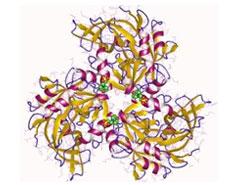Medulloblastoma is the most common and a highly malignant pediatric brain tumor located in the cerebellar region of the brain. Medulloblastomas have recently been shown to consist of four distinct molecular subgroups, viz., WNT, SHH, group 3, and group 4. MiR-206, a miRNA first identified as a myomiR due to its enriched expression in skeletal muscle was found to be expressed specifically in the cerebellum, the site of medulloblastoma occurrence. MiR-206 expression was found to be downregulated in medulloblastomas belonging to all the four molecular subgroups as well as in established medulloblastoma cell lines. Further, the expression of murine homolog of miR-206 was also found to be downregulated in SHH subgroup medulloblastomas from the Smo +/+ transgenic mice and the Ptch1 +/− knockout mice. MiR-206 downregulation in all the four medulloblastoma subgroups suggests tumor-suppressive role for miR-206 in medulloblastoma pathogenesis. The effect of miR-206 expression was analyzed in three established medulloblastoma cell lines, viz., Daoy, D425, and D283 belonging to distinct molecular subgroups. Restoration of miR-206 expression to the levels comparable to those in the normal cerebellum, however, was found to be insufficient to inhibit the growth of established medulloblastoma cell lines. OTX2, an oncogenic miR-206 target, overexpressed in all non-SHH medulloblastomas, is known to inhibit myogenic differentiation of medulloblastoma cells. Overexpression of miR-206 was necessary to downregulate OTX2 expression and inhibit growth of medulloblastoma cell lines.


